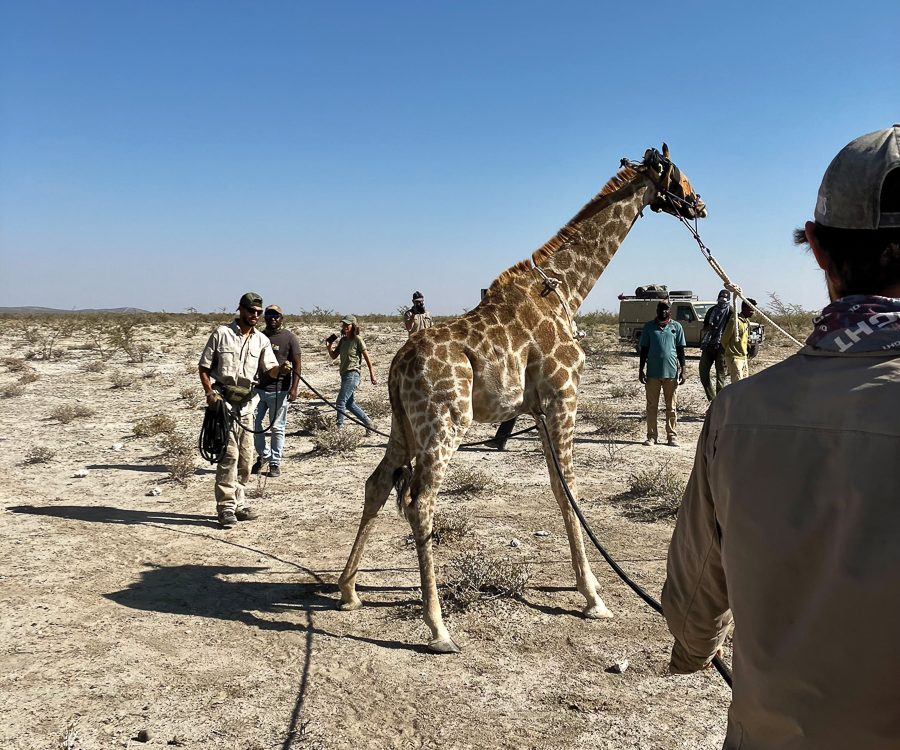AfriCat: More than 700 cats in the past 10 years
June 21, 2012Climate change to impact Namibia’s biodiversity and ecosystems
June 21, 2012Conservancy is defined as a legally protected area belonging to a group of bona fide land occupiers who have pooled their resources to practise co-operative management based on a sustainable utilisation strategy. The aim is to promote the conservation of natural resources and wildlife, where conservation means the management of human utilisation of organisms or ecosystems to ensure that such utilisation is of a sustainable nature. Conservation also includes the protection, maintenance, rehabilitation, restoration and enhancement of the populations of ecosystems. The ultimate objective is to re-instate the original biodiversity of the area and to share resources amongst all members of the conservancy.
Sustainable utilisation is a term used with increasing frequency among conservationists and commonly in African countries in conjunction with all forms of utilisation, whether consumptive or non-consumptive. The term can be explained as utilising wildlife without affecting game populations detrimentally. In terms of consumptive utilisation such as live game capture, trophy hunting and hunting for own use, it means using a certain percentage of the annual production of a given game population. Non-consumptive utilisation concentrates on other aspects of conservation including, but not limited to, the development of the tourist potential of the area, rehabilitation of an ecosystem, protecting certain species (fauna and flora), and even practising law enforcement (anti-poaching).
The Conservancy Association of Namibia (CANAM) was established in 1996 with the support of officials from the Ministry of Environment and Tourism (MET). The first conservancies in Namibia were commercial conservancies – now called free-hold conservancies, as they are on privately owned lands. They were followed by communal conservancies. The oldest conservancy on commercial farmland in Namibia is the Ngarangombe Conservancy, established in 1994. CANAM was originally established to represent all conservancies in Namibia, whether situated in rural or non-rural areas, communal areas or on commercial farmland. Today there are 19 commercial conservancies in Namibia, all of which are voluntary associations that came into being through the concern and dedication of communities in the commercial farming areas, and nearly 30 communal conservancies. Although the members of CANAM acknowledge the differences in the practical implementation of these two types of conservancies, all conservancies have the same aim as far as the conservation of our environment is concerned.
The conservancy movement in Namibia has an important history. Namibia’s commercial farmers were given conditional use/ownership over certain game species through the 1967 SWA Wildlife Ordinance, thus allowing private utilisation of game on their land. However, game occurring in the communal areas (tribal homelands) be-longed to Government. This land is still state owned. In the late 1990s legislation promulgated on conservancies in Namibia was amended in the Nature Conservation Ordinance No 4 of 1975 in the form of a new Chapter XVII, which pertains to conservancies in communal areas. This provided communal conservancies the rights of use/ownership over the game in their area if they complied with the Ordinance, thus making the use/ownership of game available to many more Namibians. This Ordinance is presently under review and new legislation will be promulgated in the near future, making provision for the formal registration of the existing conservancies, including those situated on commercial land.
The interest to develop conservancies began in the early 1990s, shortly after Namibia’s independence, because many farmers were concerned about the ever-increasing pressure exerted on wildlife through different methods of utilisation by some individual farmers. Since most game species range freely between farms, some individual farmers were over-utilising this community resource for personal gain. It became apparent that the only way that the utilisation of this game could be controlled would be through co-operative game management and co-ordinated utilisation. As a result, self-controlled, self-regulated areas for community wildlife were envisioned and the conservancy movement was born. As this was a completely new management principle, it took some time for certain regulations to pass. In the next decade many conservancies were developed. Ever more communities are showing a keen interest in establishing conservancies in their areas.
The benefits of wildlife management in conservancies are even more important today for the conservation of Namibia’s wildlife. As in many countries around the world, Namibia’s annual budget for conservation forms only a small percentage of the total annual budget. To assist in national wildlife management, which has gained considerable momentum due to the increase in conservation awareness among Namibians, the concept of conservancies has expanded.
In addition, members of the local population within conservancy areas are also much more aware of their surrounding wildlife. They participate actively in its conservation, recognising the value-adding benefits of trophy hunting and tourism in the conservancy. Therefore, through the principles of co-operative game management, communities obtain a much better insight in the day-to-day distribution, reproduction and movement of the game. This in turn leads to an increase in wildlife awareness, and the important role and function that wildlife has in our modern-day society.
Co-ordinated wildlife utilisation, if it is applied correctly, decreases the pressure on wildlife, especially huntable game species, resulting in even distribution, and hence an increase in reproduction, leading to higher game populations guaranteeing the existence of wildlife for future generations.
Through this co-operation, every member in the conservancy benefits financially, while a portion of the funds generated by the conservancy members is ploughed back into the conservancy coffers. The conservancy can also afford to support the rehabilitation of the natural resources, for instance by relocating game in the conservancy area.
To streamline the conservancy movement in Namibia, an umbrella organisation, CANAM, was established to co-ordinate and liaise conservancy efforts and to act as a lobby group in the interest of conservancies and conservation with the relevant ministries.
This article appeared in the 2004/5 edition of Conservation and the Environment in Namibia.

